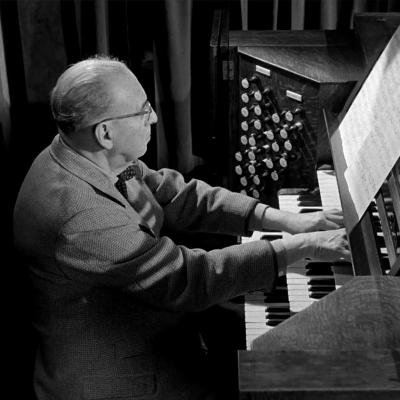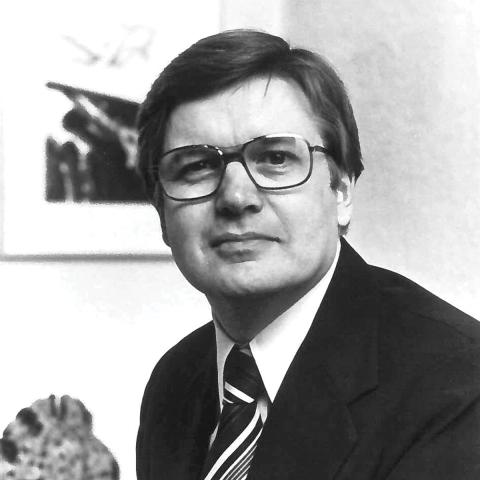A year of remembrances in 2018
Fr. Scott A. Haynes, SJC, is associate pastor and prefect of liturgy and music at Chicago’s Saint John Cantius Catholic Church. He studied organ at Washington National Cathedral under the tutelage of Douglas Major, organist and choirmaster, and choral conducting at the University of Alabama and Westminster Choir College. As a composer, he has won prizes in composition from the American Society of Composers and Arrangers. In 2011, after becoming Trustee of the Estate of Healey Willan, he founded the Healey Willan Society to promote Willan’s musical legacy.

The English-Canadian composer Healey Willan had a lifelong love of sacred music. Gregorian chant, sacred polyphony, and organ music were his lifeblood. The “Dean of Canadian Composers” wrote over 850 works, including operas, symphonies, songs, and chamber music. Yet one might argue that his church music is among his most beloved work. Many a choir has in its library at least one chestnut from Healey Willan. Over his lifetime, he was commissioned to write many sacred compositions for festivals, convocations, and events. A review of his life shows how this “Man of Music” whose heart beat with melody day and night was deeply committed to glorifying God through the gift God gave him—music!
Shortly before he died in 1968, Willan asked his daughter, Mary Willan Mason, to take responsibility of promoting his musical legacy. Mason enlisted the help of Giles Bryant, and together they worked in concert with the National Library of Canada to publish a complete catalog of his works in 1972. The National Library received from the Willan family all of his manuscripts as a national treasure of Canada.
In 2011, Mary Willan Mason passed the baton to the Canons Regular of Saint John Cantius in Chicago with the author as trustee of his estate, assuming responsibility of promoting his musical legacy for the years to come. As the Healey Willan Society was formed to promote Willan’s music, I began to imagine what ways we might rejuvenate interest in Willan’s music. In 2018, fifty years after his passing, we have brought Willan’s catalog into the twenty-first century and put the full list of his works online with a new website dedicated to Willan and his music.
There have been some excellent film documentaries made about Willan’s music in past years. The Healey Willan Society has now made a documentary, The Man Behind the Music, with Mary Willan Mason, to tell Willan’s story from her perspective. Ruben Valenzuela and Angel Mannion, the artistic directors of “Willan West 2018,” are in the process of making a new documentary during this anniversary year with interviews of those who knew Willan, from colleagues to choristers.
To mark the fiftieth anniversary of Willan’s death, many musical organizations and artists have been performing his music in church services and in concert. To promote Willan’s music in 2018, the organists of Saint John Cantius Catholic Church in Chicago, Corrado Cavalli and Jonathan Rudy, will perform the complete organ works of Willan, and the parish choirs will sing nearly every page of his sacred choral works. In San Diego, a monumental effort has been organized to showcase Willan’s music through “Willan West 2018,” including a complete performance of all of Willan’s Masses. The Healey Willan Society is making efforts to record any and all use of Willan’s music, publishing a calendar of events on its website. To this end, organists, choirs, and other musical groups from around the world are invited to submit any 2018 events (including past events) to be included in the calendar of events, in order that a thorough record might be kept.
Biretta Books of Chicago has commissioned new choral works in homage to Willan. Composer Stephanie Martin has written a new anthem, The Earthly Tree, which will be premiered on December 4 and 5 by the Toronto Mendelssohn Choir. Nicholas White has composed an arrangement of traditional carols, Angel Carols, which will be premiered at Lessons and Carols at Saint John Cantius Church on December 15. Composer Ed Frazier Davis is writing new settings of Ave Verum and Maria, Mater Gratiae, while Stephen Cleobury is also preparing new musical compositions that will be dedicated to honor Healey Willan. These new choral works will be soon available through Biretta Books. The Healey Willan Society also sponsored a composition competition for the students at the Conservatorio Giuseppe Verdi, Torino, Italy, earlier this year. Professor Ruo Rui selected the best four student compositions for consideration. Camilla Andrea Piovano’s setting of Maria Mater Gratiae was chosen as the winning composition.
While Willan’s music continues to be published by Oxford University Press,
C. F. Peters, Concordia, and others, the Willan Estate has many works it is re-publishing thanks to the assistance of the Healey Willan Society and Biretta Books. Among the organ works, canticles, and motets, Biretta Books also is providing publication of Willan’s beautiful choral Masses. Some of Willan’s Masses were written for the Roman liturgy. For example, Willan enjoyed friendship with the Basilian Fathers in Toronto, taught them Gregorian chant, and assisted them in the preparation and publication of The New St. Basil Hymnal in the 1950s. For this hymnal he wrote the Mass of St. Theresa and some new hymns.
While most of Willan’s a cappella Masses were written in English for the Anglican liturgy; these Masses are easily adapted and arranged with Latin texts, making it possible to sing these beautiful works in the Roman liturgy. Biretta Books publishes both the original English versions and Latin versions (e.g., Missa Sancti Michaelis) for use in the Roman Rite. Besides Willan’s a cappella Masses, which are choral gems, there exist in his catalog other Masses that have not seen the light of day in decades.
For more information about the work of the Healey Willan Society please see our website (www.healeywillan.com) to contact us.



